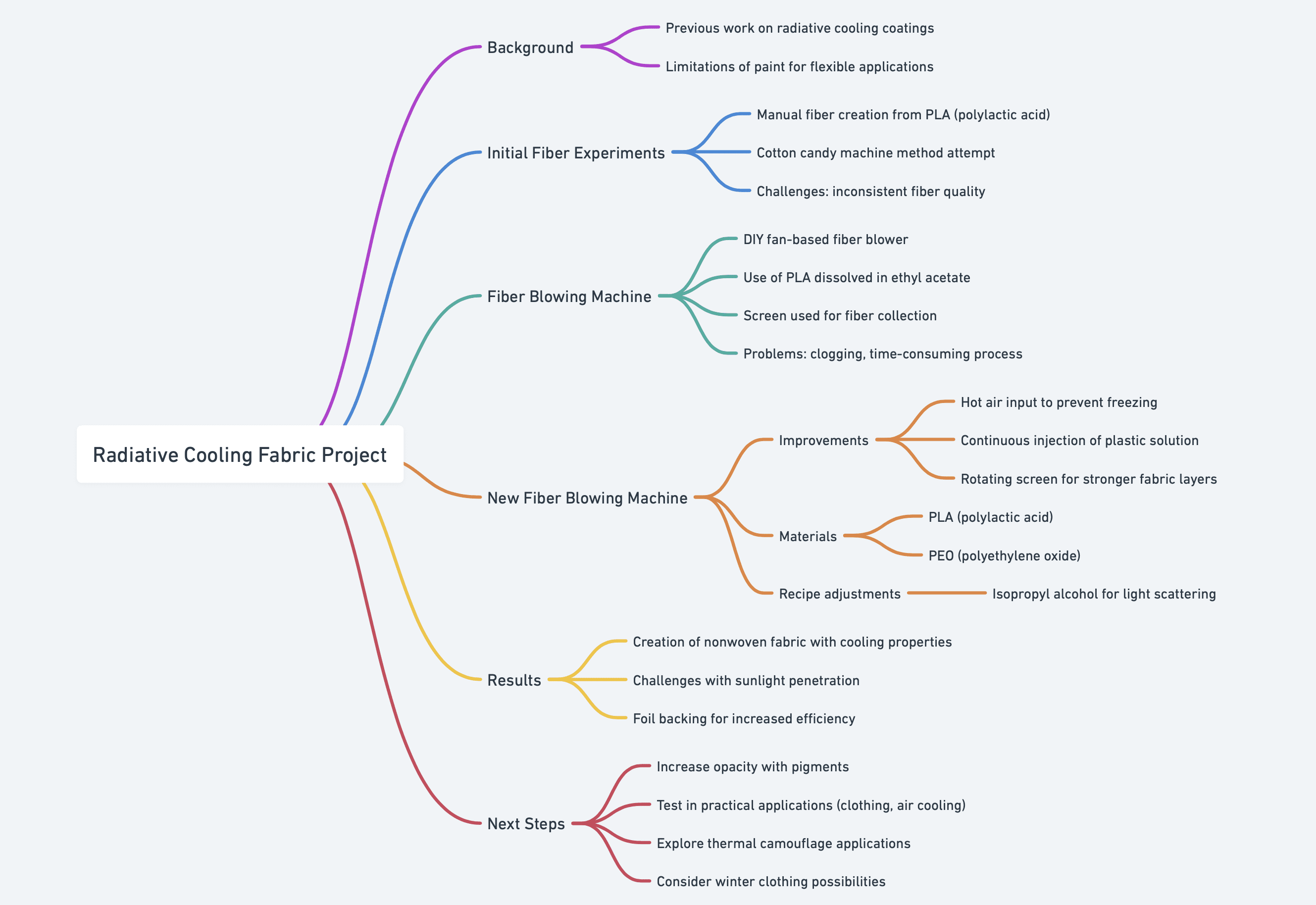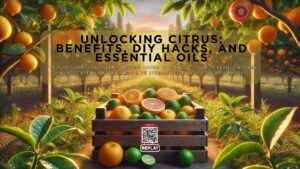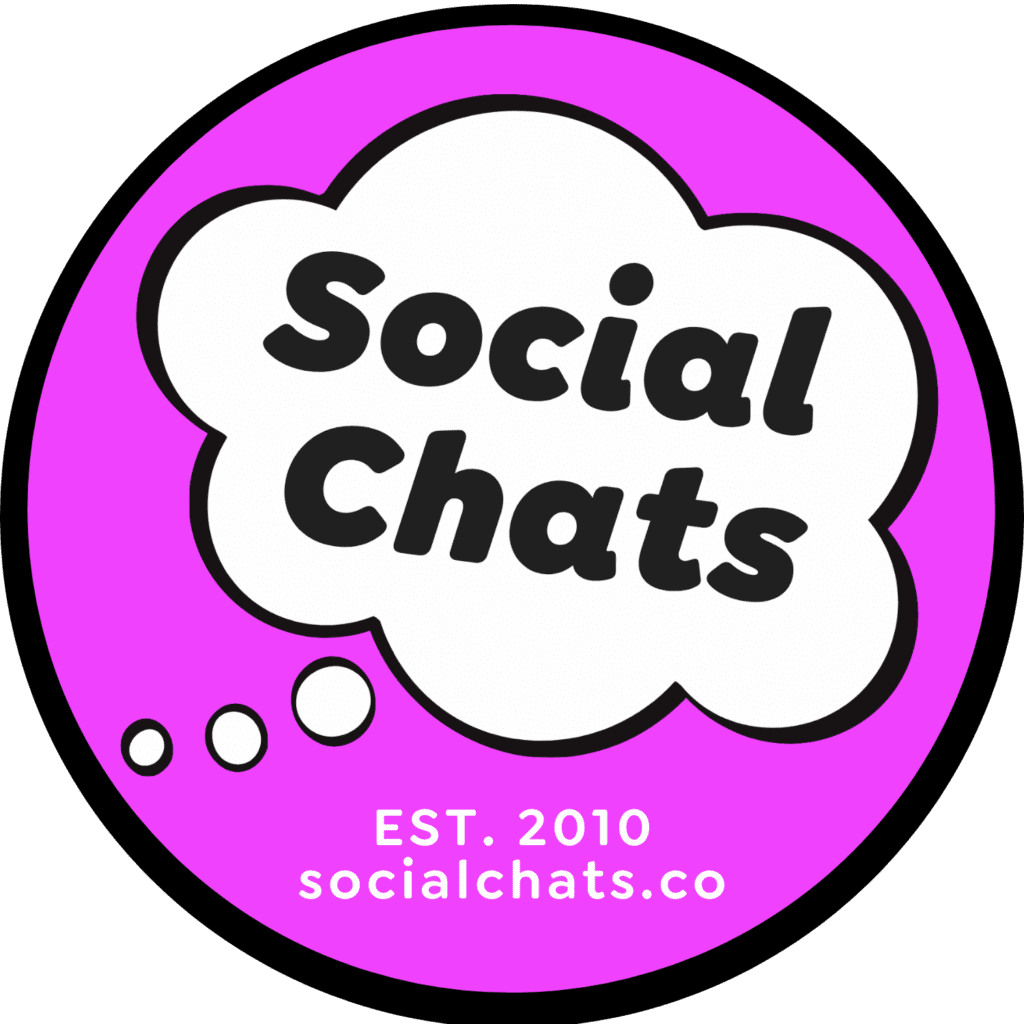

On Sep 27, 2024, Ben, an innovative DIY enthusiast, introduced a groundbreaking project: turning plastic waste into bioplastic cooling fabric using simple materials and a homemade machine. This cooling fabric utilizes radiative sky cooling to reflect sunlight and maintain subambient temperatures, offering a sustainable alternative to traditional cooling methods like air conditioning. Ben’s project exemplifies the growing trend toward sustainable cooling solutions that not only reduce energy consumption but also tackle the environmental problem of plastic waste.
This journey from regular plastic to flexible bioplastic fabric isn’t just an interesting DIY project—it signals a new era of eco-friendly technology that could revolutionize how we cool outdoor environments, wearables, and even large-scale buildings. The result? A world where cooling solutions are sustainable, effective, and adaptable for various real-world applications.
Here is the original YouTube video where Ben walks you through the process of turning everyday plastic into high-tech bioplastic cooling fabric. Watch the full story unfold!
Video Summary:
-
- 🛠️ Innovative Cooling Fabric: Ben introduces the project, where he uses hardware store parts to develop self-cooling fabric using PLA bioplastic, an exciting alternative to traditional cooling methods.
- 🌡️ Radiative Sky Cooling: The fabric leverages radiative cooling, a method where surfaces stay cooler than the surrounding air even under sunlight, previously explored in the series using paint.
- 🧵 Fabric Production Process: Initial experiments included creating fibers from PLA using a homemade setup, proving that PLA fibers can cool. However, the fibers were too brittle and inconsistent for practical use.
- 💡 Refining the Process: Ben refines the fiber-making machine using an inline fan and polyethylene oxide (PEO) to produce finer and more consistent fibers. These fibers eventually form a fabric, but the process faces efficiency challenges.
- 🔬 Material Strength: Several iterations lead to a fabric strong enough to be compared to materials like coffee filters. Ben then adjusts his method to make the process more efficient by incorporating solvents and reworking the spinning technique.
- 👕 Real-World Application: Ben applies the fabric to a hat to test its effectiveness, comparing its cooling ability to standard materials. The fabric shows promising results in cooling, though not perfectly effective when applied as clothing.
- 🐻 Polar Bear Effect: The fabric’s performance led to comparisons with the insulating properties of polar bear fur, reflecting light but also trapping heat in lower layers, prompting Ben to explore different backing materials.
- 🔬 Further Testing and Future Development: Ben acknowledges more work is required to perfect the fabric, but early results are promising, especially when tested for radiative cooling without protective layers. The fabric may also have potential in air cooling and thermal camouflage applications.
The Power of Bioplastic Cooling Fabric: From Concept to Realization
Ben’s project, initially explored in a live-streamed session, tackled the challenge of making cooling materials more flexible and adaptable. Using PLA bioplastic, which is already known for its favorable infrared emission spectrum, the idea was to create a fabric that could reflect sunlight and keep surfaces cool. This development highlights how bioplastics are moving beyond traditional uses to become key materials in innovative applications like passive cooling fabrics.
While rigid surfaces like roofs and panels had already benefited from radiative sky cooling through coatings and paints, Ben’s focus was on creating a material that could be flexible and functional. His cooling fabric aims to be a solution for clothing, outdoor cooling applications, and even portable shading systems. The use of bioplastic in fabric opens up endless possibilities for cooling technology in everyday products.
Optimizing the Production Process with DIY Innovation
The creation of this cooling fabric wasn’t without its challenges. The original method of producing fibers using a PLA-based mixture proved inefficient, with fibers being too brittle for practical use. Through trial and error, Ben developed a refined process, utilizing a fan-driven setup and a polyethylene oxide (PEO) additive to make fibers that were strong enough to form fabric sheets. This not only increased the consistency of the material but also marked a significant leap in the DIY bioplastic production process.
The PLA bioplastic fibers, when spun out, exhibited radiative cooling properties by reflecting sunlight and emitting heat back into the atmosphere. But Ben didn’t stop at proving the material’s basic cooling capabilities; he wanted to refine the process further, aiming for stronger, more flexible fabrics that could be applied in wearable technologies. This focus on adaptability and real-world application makes his project even more groundbreaking.
The Environmental Benefits of Bioplastic Fabrics
PLA, as a bioplastic, offers several environmental benefits that make it an ideal candidate for passive cooling fabric. First, it’s derived from renewable resources like cornstarch and sugar, unlike petroleum-based plastics. This makes it a sustainable alternative, reducing the reliance on fossil fuels in material production. Second, PLA is biodegradable under the right conditions, meaning that at the end of its life cycle, the cooling fabric won’t contribute to the growing plastic waste crisis.
This sustainability factor is vital as more industries look for ways to decrease their environmental footprint. By creating cooling materials from PLA, Ben has not only pioneered a more eco-friendly cooling solution but also contributed to the broader effort of reducing plastic waste through innovative, renewable alternatives.
Using Pigments to Boost Cooling Effectiveness
One of the most promising advancements in Ben’s cooling fabric project was the potential to improve its effectiveness by adding pigments. Pigments increase the material’s reflectivity, which is crucial for maintaining subambient temperatures under direct sunlight. The current fabric lets some sunlight pass through its layers, absorbing heat and reducing its cooling potential. By experimenting with pigments, Ben could enhance the opacity and reflectivity of the material, resulting in more efficient cooling performance.
Incorporating pigments into the PLA mixture might also allow for broader applications, such as creating larger, more effective cooling sheets or wearable items that offer better sun protection and cooling effects. These enhancements could be key in the future development of this bioplastic-based technology.
Conclusion Diagram

Insights Based on Numbers:
- 15% Absorption by Foil: Ben discovered that adding aluminum foil as a backing material for the fabric caused it to absorb about 15% of sunlight, which created challenges in keeping the material cool under direct light. To counteract this, he plans to explore more reflective backing materials or improve the fabric’s opacity with pigments.
- 1 Million G per Mole PEO: Switching to shorter-chain polyethylene oxide (PEO) with a molecular weight of around 1 million G per mole significantly improved the fiber’s consistency, making the material more flexible and functional for cooling applications.
Timestamps of Key Moments:
- Introduction to Bioplastic Cooling Fabric: Ben introduces the project and explains how radiative sky cooling works.
- Radiative Sky Cooling Concept: Details of how cooling fabrics can reflect sunlight to stay cooler than their surroundings.
- Challenges with Initial Fiber Production: The initial difficulty of producing fibers from PLA bioplastic.
- Using PEO to Improve Fibers: How adding polyethylene oxide (PEO) strengthened the fibers.
- Testing the Fabric on Wearable Tech: Real-world application of the cooling fabric on a hat.
- Polar Bear Effect and Heat Retention: Ben compares the performance of his fabric to the natural insulation of polar bear fur.
- Future Application for Air Cooling: Discussing the possibility of using this cooling fabric for air-cooling systems.
- Conclusion and Further Development: Ben’s final thoughts on improving the fabric and potential future applications.
Explanatory Q&A
Q1: How does radiative sky cooling work in flexible materials compared to rigid surfaces?
Radiative sky cooling is a natural process where a surface emits infrared radiation, cooling itself down to temperatures lower than the surrounding air. While this has been applied to rigid surfaces like building roofs, Ben’s innovation lies in using this concept with flexible fabrics. This makes the technology much more versatile, as the fabric can be worn or used as temporary outdoor cooling solutions, offering cooling benefits in more dynamic environments than fixed structures.
Q2: What are the environmental benefits of using PLA bioplastic for cooling applications?
PLA bioplastic is sourced from renewable materials like cornstarch and sugar, making it a sustainable alternative to petroleum-based plastics. Additionally, it is biodegradable, meaning it can break down naturally in the environment under the right conditions, which reduces plastic waste. By using PLA for cooling fabric, Ben not only contributes to passive cooling solutions but also reduces the environmental impact of plastics, addressing two major sustainability issues simultaneously.
Q3: How can adding pigment to the plastic mixture improve the cooling effectiveness of the fabric?
Adding pigments to the PLA mixture could improve the fabric’s reflectivity and opacity, allowing it to block more sunlight and stay cooler. This would address the “polar bear effect,” where light bounces around the lower layers of fabric, causing heat retention. By experimenting with pigments, Ben aims to create a fabric that reflects even more sunlight, further enhancing the radiative sky cooling effect.
Conclusion
Ben’s work on bioplastic cooling fabric shows how small DIY innovations can contribute to sustainable technologysolutions. By using renewable materials like PLA and employing radiative sky cooling, his project offers a new way to keep surfaces and even clothing cool without relying on traditional, energy-intensive cooling methods.
As Ben puts it, “We’re just scratching the surface of what bioplastics can do for passive cooling, and this project shows that even simple DIY innovations can contribute to a more sustainable future.”
To support more of these eco-friendly innovations or learn how to incorporate bioplastics into your projects, follow Ben’s journey on YouTube or contribute to his Patreon for live updates!
Check out the Mind Map of Homemade Machine Turns Bioplastics Into Cooling Fabric!

Disclaimer: Youtube Video Summary Of NightHawkInLight Video uploaded Sep 27, 2024| Homemade Machine Turns Bioplastics Into Cooling Fabric. His Summary/ Long Form Blog Was Created With The Assistance Of AI Language Model ChatGPT By OpenAI.
WRITTEN BY
Social Chats
Social Chats is a multimedia and entertainment company. It’s a division of kNOw Aging, inc. a communications consultancy.









